Scientists Monitor Emerging Fungal Disease in Snakes
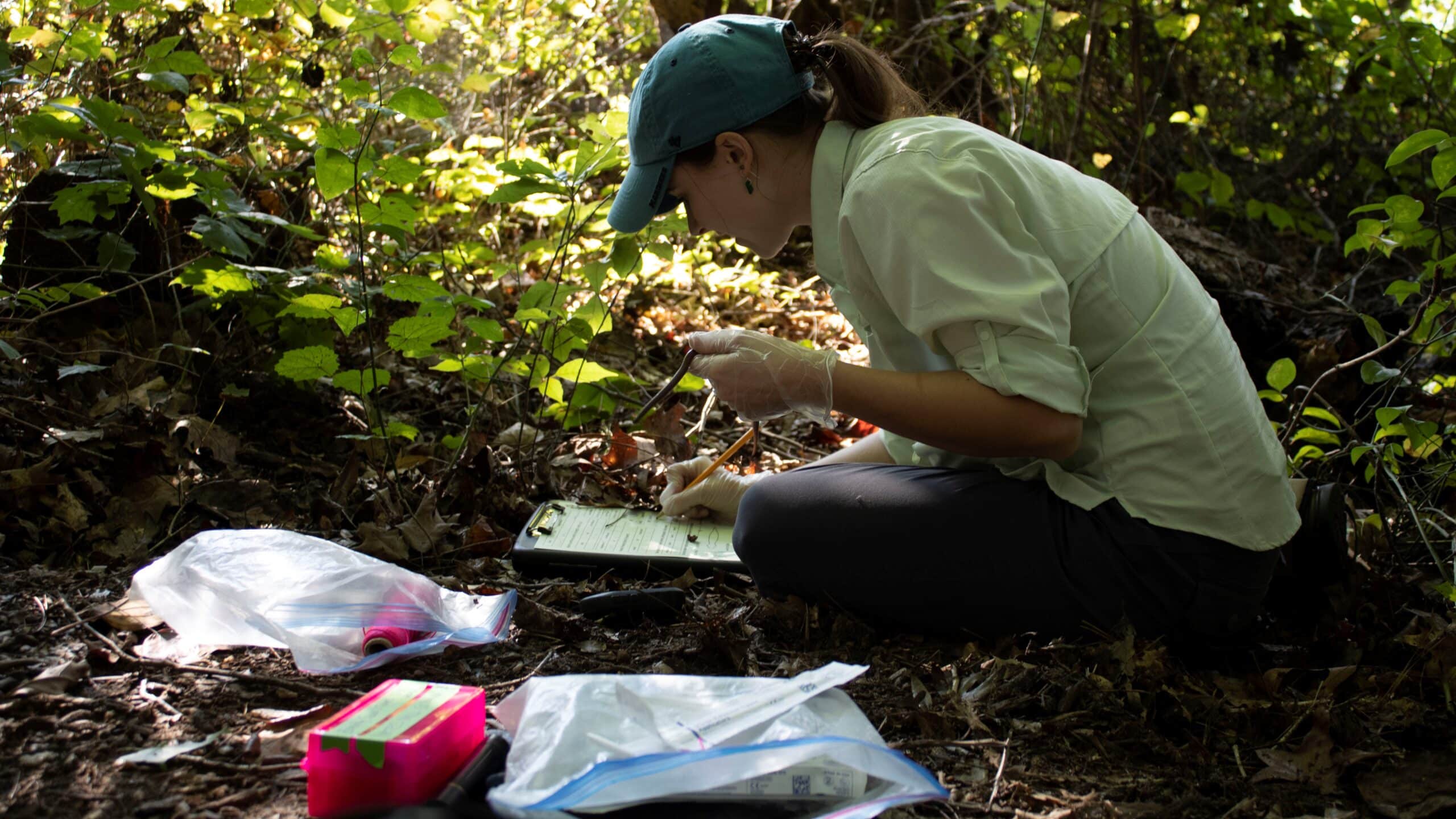
Three researchers at North Carolina State University began lifting logs, tipping stumps and peeking under rocks as they walked down a trail in a park near Raleigh recently.
Their work was tough, but they were enthusiastic about their mission: to understand how often an emerging infectious disease infects tiny, non-venomous snakes – some smaller than a pencil.
“Hi munchkin, good morning!” said Kenzie Pereira, a postdoctoral fellow in the NC State Department of Applied Ecology, as she picked up one of two small worm snakes that she found under a decaying log.
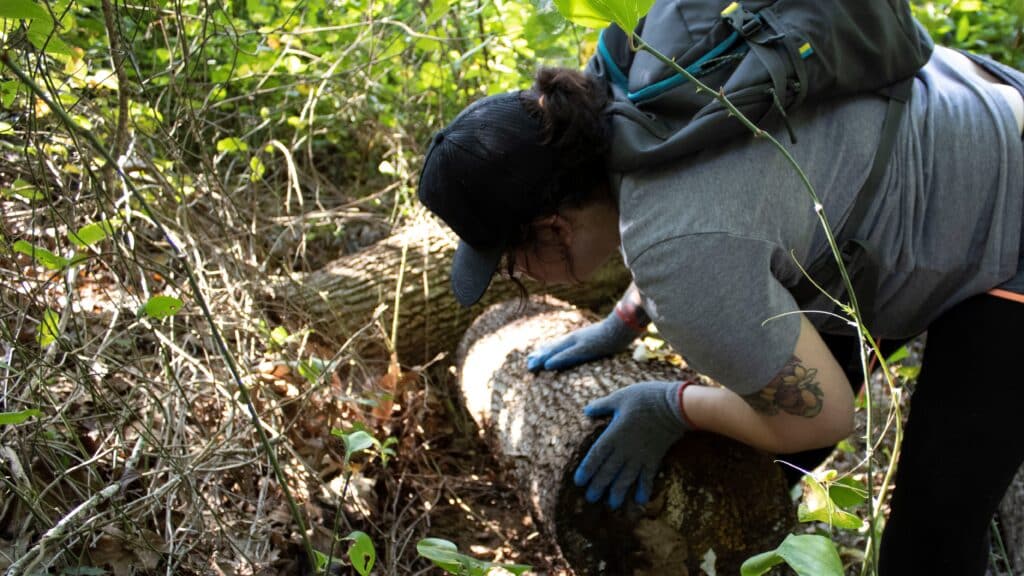
With a permit from the North Carolina Wildlife Resources Commission that allows them to handle the snakes, and outfitted in boots, shin guards and gloves, the researchers were on a mission to track ophidiomycosis, an emerging disease in snakes caused by a fungus, in small snakes across rural and urban environments in the Triangle.
The snake’s tongue flicked in and out as it wrapped itself around Pereira’s gloved fingers. The two other researchers wrote down its sex – which they determined by looking at the length of the tail – as well as the temperature, moisture content and acidity of the soil where they found it. Using a string, her colleagues tried to measure the snake.
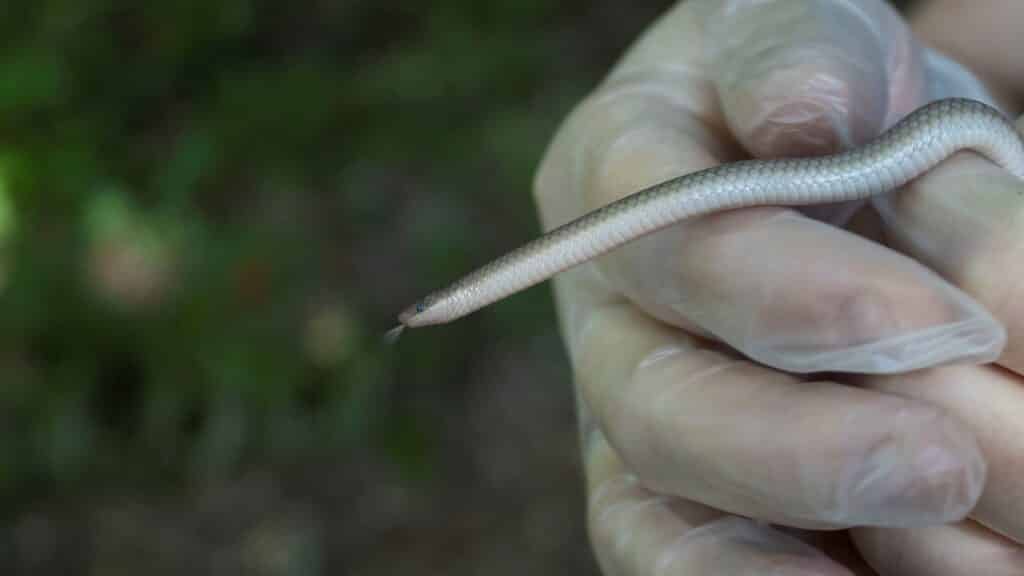
“He’s really squirming – what he’s doing now is trying to knot himself up,” said Emily Oven, a graduate student in applied ecology at NC State who is leading the work.
Then Oven began searching for telltale skin damage caused by ophidiomycosis. She used a UV flashlight to help her look. The light will fluoresce a different color on fungus-damaged skin.
“This one doesn’t look to be infected,” Oven said. But under the UV light, the other snake did not seem to be so lucky. The researchers also used a Q-tip to swab for the fungus. Later, laboratory testing will confirm whether DNA from the fungus was present.
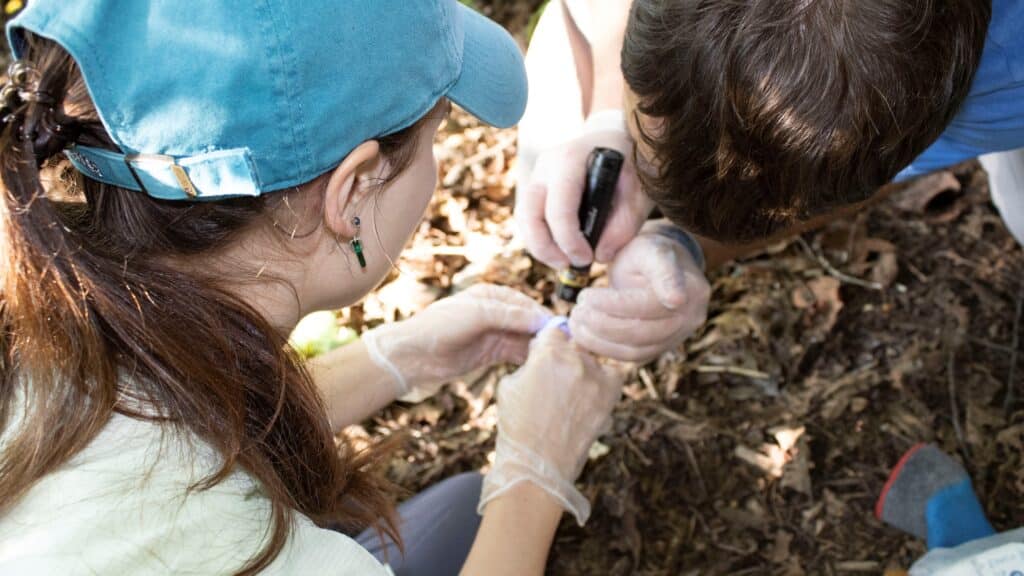
Disease Across Temperature, Urbanization Changes
Ophidiomycosis can grow under snakes’ scales, causing sores and wounds. While the disease can be harmful, and even fatal, to snakes, it is not known to affect people. Skylar Hopkins, assistant professor of applied ecology at NC State, said the fungus is specific to snakes; it doesn’t even affect other related animals, like lizards or turtles.
“These snakes are coming into contact with the pathogen when they’re slithering across the soil, or when they over-winter, or in basking sites, and then can also get it when they come into contact with infected snakes,” Oven said. “We’ve been finding some lesions on the snout and back of the tip of the tail.”
The disease has been documented in academic papers since 1997, but Hopkins said the newest analyses suggest it has likely been in the United States for centuries. Researchers also think newer strains might have been introduced in the past few decades that could be worse for snakes.
In addition to understanding overall prevalence and disease severity in North Carolina’s snakes, the researchers at NC State are worried that fungus could thrive as the climate warms. They also want to know if the emerging infectious disease will be more of a problem as urbanization increases.
So they have been working at parks, state forests, nature preserves, as well as backyards across central North Carolina to count, identify and swab North Carolina’s small-bodied snake populations. That includes small snakes like worm snakes, earth snakes and ring-necked snakes. These species haven’t been looked at as closely as their larger-bodied counterparts, Oven said.
Drawn to the Mysterious, Misunderstood
Back in the park, the researchers finished looking for snakes along the trail, and started measuring a perimeter with a measuring tape. By defining a plot and counting the snakes in them, they can estimate the density of snakes in different parks. They turned over all possible cover spots to find snakes inside the plot.
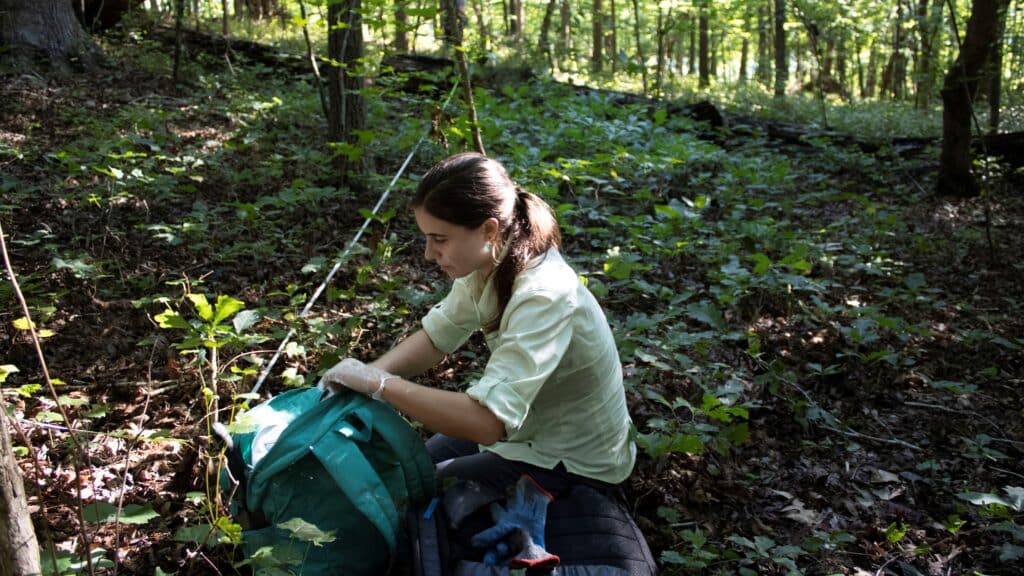
“Wait Zach can’t you flip that?” Oven called to her colleague, Zach Gajewski, a postdoctoral researcher at NC State, pointing at a massive fallen tree.
“Why don’t you try it, Emily!”
“I didn’t drink enough coffee,” Oven said.
Hopkins said her team often gets questions about venomous snakes from park-goers who see them surveying snakes. They do sometimes see venomous snakes, like copperheads. But copperheads want to avoid people, and the researchers make sure to watch out for copperheads and give them space.
“What you don’t know, you shouldn’t mess with,” Oven said. “We try to be careful when turning over items. We also know how to identify venomous snakes so we can intentionally avoid them.”
In addition to finding snakes on the ground, they’ve also seen them in trees before, Oven said.
“It’s cool to see them defy gravity like that,” she said.
The researchers hope that by learning more about snake diseases, they will be able to make recommendations for how to best protect snakes in the future. Snakes play an important role in ecosystems – providing food for other animals and helping regulate small mammal pest populations.
The researchers are also driven by an obvious love for the slithering reptiles.
While some scientists study fuzzy, cuddly wildlife, Oven said she is drawn to slimy, misunderstood, mysterious animals. “They’re these scaly, burrowing, almost mythical creatures,” Oven said. “When you flip over rocks or rotten logs, there’s no better feeling than finding a snake underneath,” she added.
This post is part of a series focused on field work at NC State.
- Categories:


